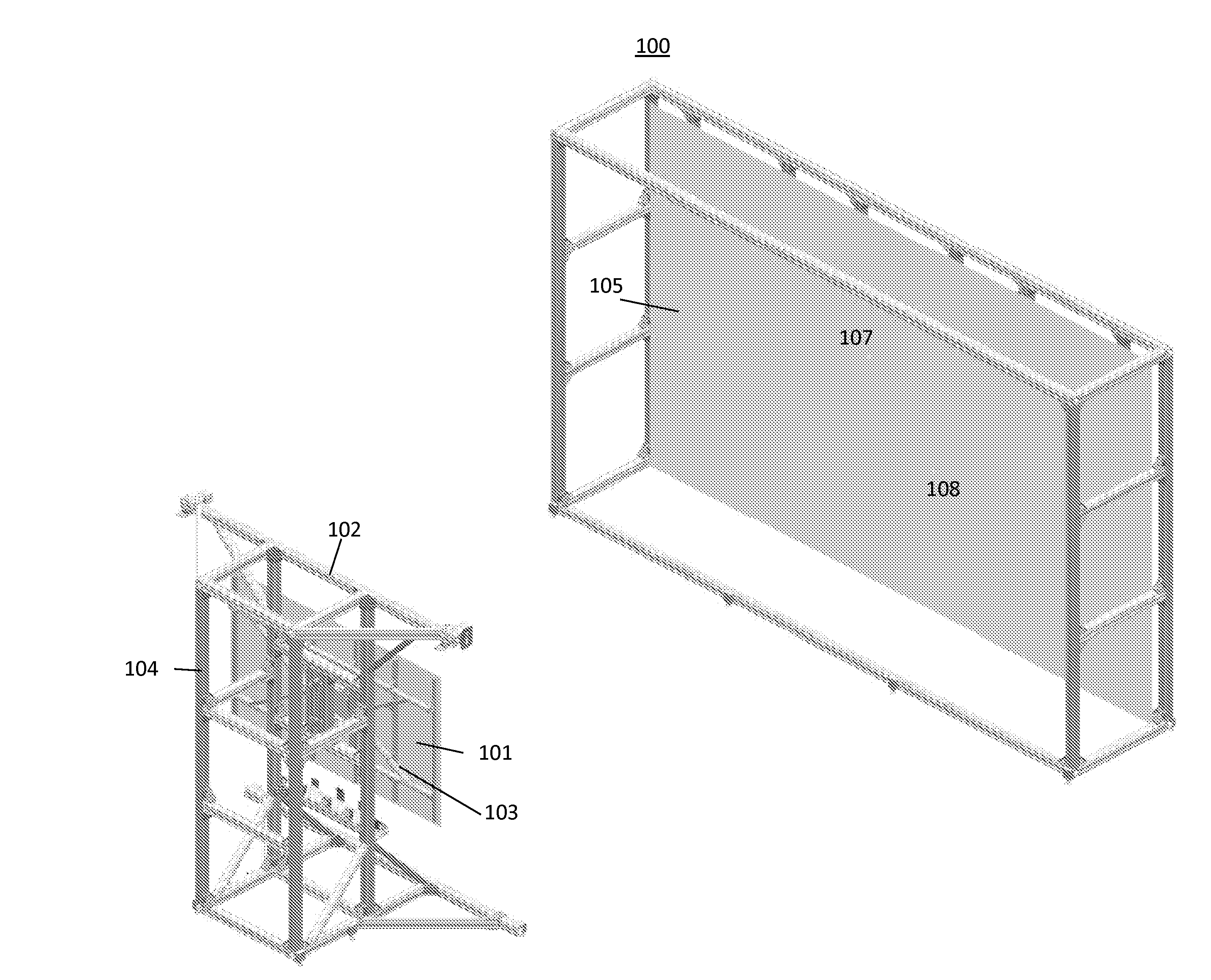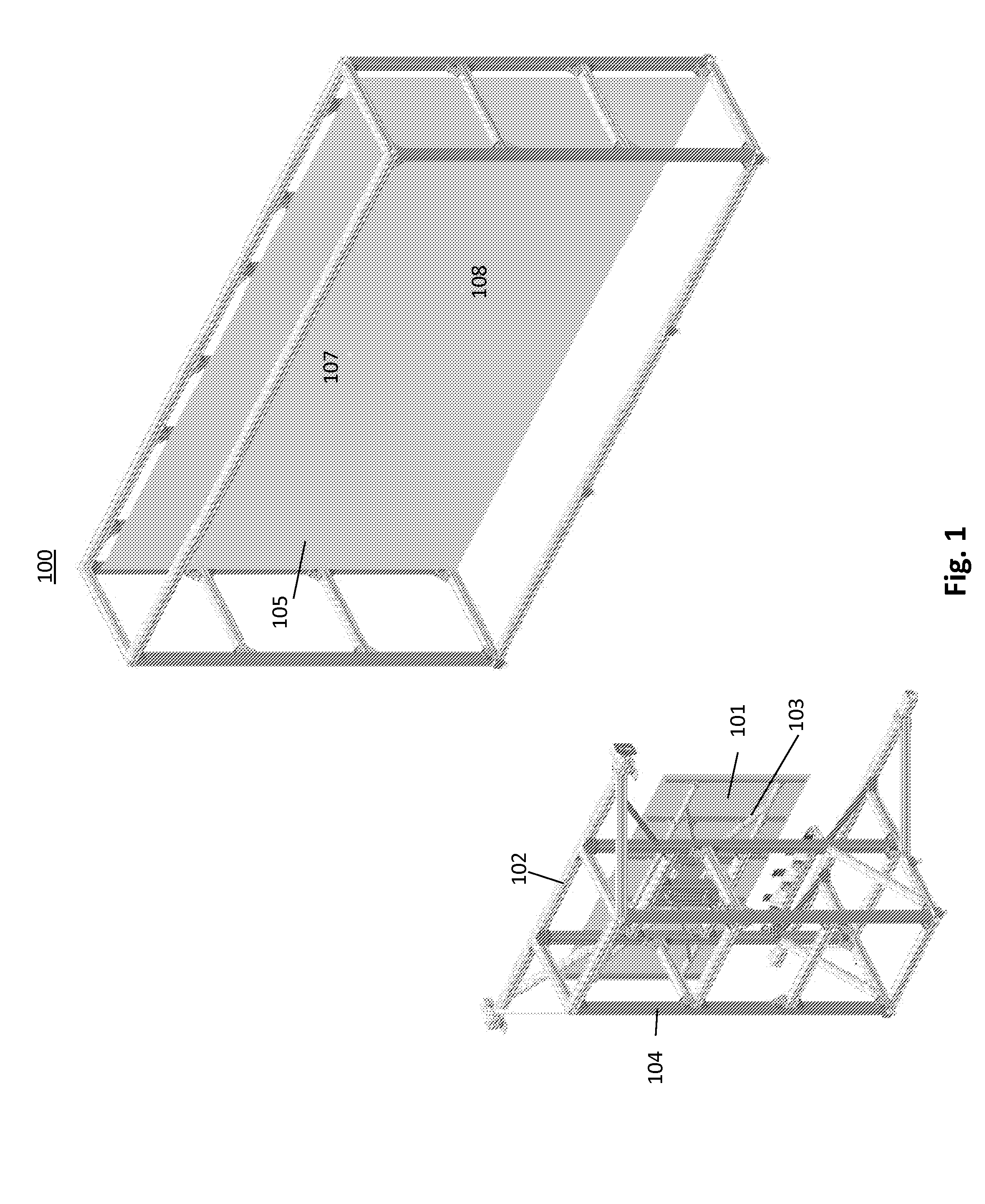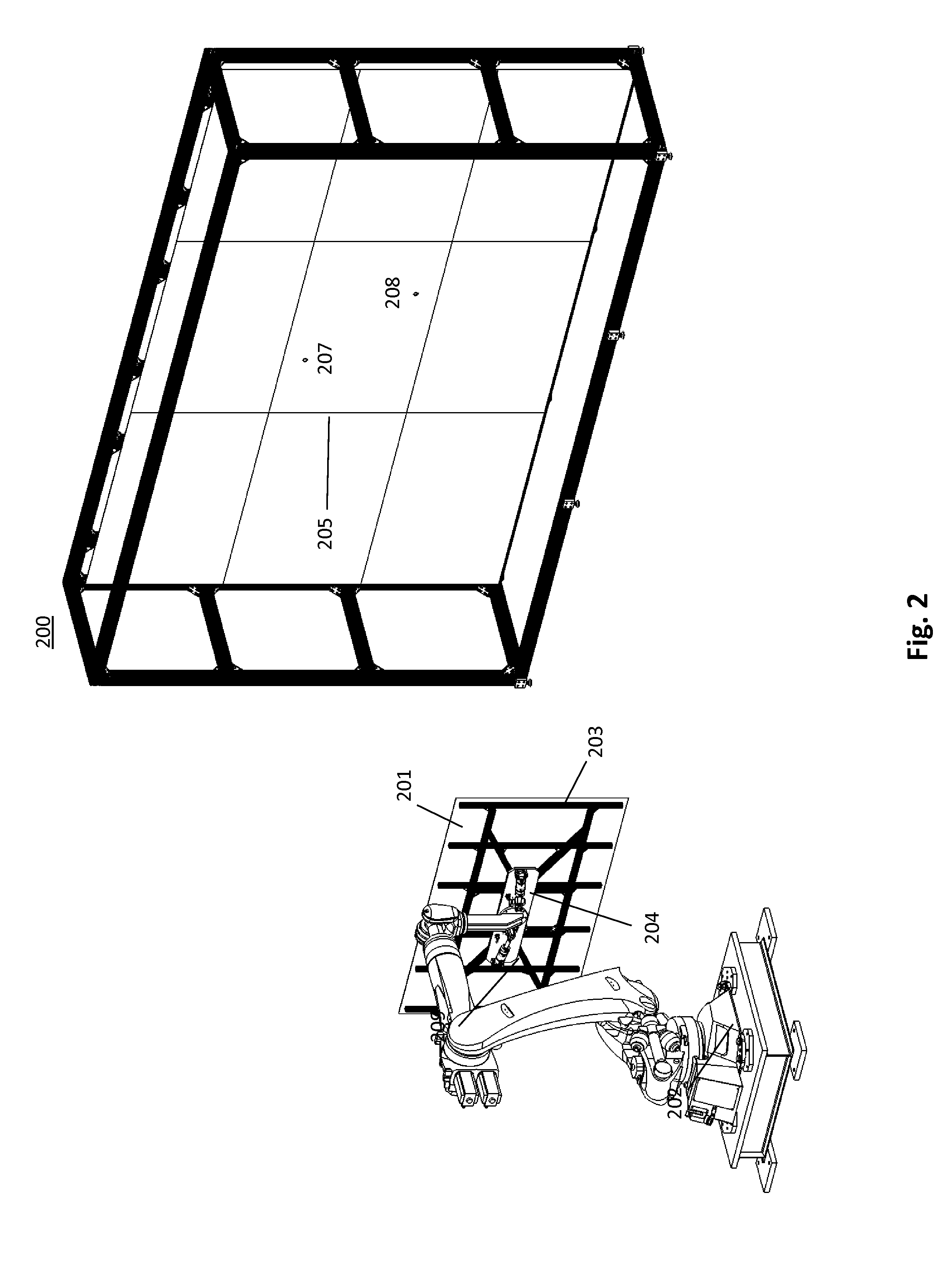Automated deflectometry system for assessing reflector quality
a technology of automatic deflectometry and reflector quality, which is applied in the direction of reflective surface testing, instruments, image enhancement, etc., can solve the problems of preventing the use of the receiver as a quality checking system in high-volume manufacturing, affecting the accuracy of the reflector, and unable to unambiguously identify the quality of the reflector
- Summary
- Abstract
- Description
- Claims
- Application Information
AI Technical Summary
Benefits of technology
Problems solved by technology
Method used
Image
Examples
first embodiment
[0065]FIG. 7 is a detailed flowchart depiction of a method (730) for assessing the quality of a reflector using the present invention, wherein the method comprises the following steps:[0066]1) Setup the automated deflectometry system according to the embodiment depicted in FIG. 1, wherein the calibration surface has a known surface quality and has a larger mirror area than the mirror area of the reflective surface to-be-measured,[0067]2) Commission the holding fixture and target screen to be parallel to each other at a predetermined distance apart,[0068]3) Calibrate the digital cameras,[0069]4) Overlay a template having the same dimensions as the reflective surface onto the calibration surface,[0070]5) Mount the calibration surface onto the holding fixture,[0071]6) Take an image of the calibration surface with each camera,[0072]7) Determine the coordinates of the corners of the template using the image processing software,[0073]8) Locate the features of the known pattern in the imag...
second embodiment
[0080]FIG. 8 is a detailed flowchart depiction of a method (830) for assessing the quality of a reflector using the present invention, wherein the method comprises the following steps:[0081]1) Setup the automated deflectometry system according to the embodiment depicted in FIG. 2, wherein the calibration surface has an unknown surface quality and has a larger mirror area than the reflective surface to-be-measured,[0082]2) Commission the holding fixture and target screen to be parallel to each other at a predetermined distance apart,[0083]3) Calibrate the digital cameras,[0084]4) Overlay a template having the same dimensions as the reflective surface onto the calibration surface,[0085]5) Mount the calibration surface onto the holding fixture,[0086]6) Take a first image of the calibration surface with each camera,[0087]7) Translate the calibration surface along a first axis in the plane parallel to the target screen face and take a second image of the calibration surface with each cam...
third embodiment
[0099]FIG. 9 is a detailed flowchart depiction of a method (930) of assessing the quality of a reflector using the present invention, wherein the method comprises the following steps:[0100]1) Setup the automated deflectometry system according to the embodiment depicted in FIG. 2, wherein the calibration surface has a known surface quality and has a mirror area substantially less than the reflective surface to-be-measured,[0101]2) Commission the holding fixture and target screen to be parallel to each other and set a predetermined distance apart.[0102]3) Calibrate the digital cameras,[0103]4) Mount the calibration surface onto the holding fixture,[0104]5) Translate the calibration surface along at least one axis in the plane parallel to the target screen face and take an image of the calibration surface with each camera,[0105]6) Repeat Step 5 until the entirety of the known pattern on the target screen has been captured in reflected images,[0106]7) Using the image processing software...
PUM
 Login to View More
Login to View More Abstract
Description
Claims
Application Information
 Login to View More
Login to View More - R&D
- Intellectual Property
- Life Sciences
- Materials
- Tech Scout
- Unparalleled Data Quality
- Higher Quality Content
- 60% Fewer Hallucinations
Browse by: Latest US Patents, China's latest patents, Technical Efficacy Thesaurus, Application Domain, Technology Topic, Popular Technical Reports.
© 2025 PatSnap. All rights reserved.Legal|Privacy policy|Modern Slavery Act Transparency Statement|Sitemap|About US| Contact US: help@patsnap.com



